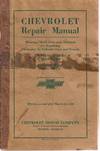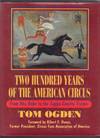
A Series of Letters on the Improved Mode in the Cultivation and Management of Flax: With Various Rules and Instructions on the Value and Qualities of Flax Adapted to Spin Into the Different Numbers of Yarns.
by James H Dickson
- Used
- Very Good
- Hardcover
- first
- Condition
- Very Good
- Seller
-
Scarborough , North Yorkshire, United Kingdom
Payment Methods Accepted
About This Item
Green embossed design cloth binding. Gilt title on the spine. Contains many newspaper cuttings.
This is a unique first edition of James Hill Dickson's famous work on 'flax'.
James Hill Dickson was a Victorian textile writer famous throughout the world for his works on different natural fibers.
This edition includes a great amount of 'flax ephemera'. The additional material contains a Victorian Company Prospectus along with many other related historic items.
Flax, also known as common flax or linseed, is a flowering plant, Linum usitatissimum, in the family Linaceae. It is cultivated as a food and fiber crop in regions of the world with temperate climates. Textiles made from flax are known in English as linen and are traditionally used for bed sheets, underclothes, and table linen. Its oil is known as linseed oil. In addition to referring to the plant, the word "flax" may refer to the unspun fibers of the flax plant. The plant species is known only as a cultivated plant and appears to have been domesticated just once from the wild species Linum bienne, called pale flax. The plants called "flax" in New Zealand are, by contrast, members of the genus Phormium.
The earliest evidence of humans using wild flax as a textile comes from the present-day Republic of Georgia, where spun, dyed, and knotted wild flax fibers found in Dzudzuana Cave date to the Upper Paleolithic, 30,000 years ago. Humans first domesticated flax in the Fertile Crescent region. Evidence exists of a domesticated oilseed flax with increased seed-size from Tell Ramad in Syria and flax fabric fragments from Çatalhöyük in Turkey by c. 9,000 years ago. Use of the crop steadily spread, reaching as far as Switzerland and Germany by 5,000 years ago. In China and India, domesticated flax was cultivated at least 5,000 years ago.
Flax was cultivated extensively in ancient Egypt, where the temple walls had paintings of flowering flax, and mummies were embalmed using linen Egyptian priests wore only linen, as flax was considered a symbol of purity. Phoenicians traded Egyptian linen throughout the Mediterranean and the Romans used it for their sails. As the Roman Empire declined, so did flax production. But with laws designed to publicize the hygiene of linen textiles and the health of linseed oil, Charlemagne revived the crop in the eighth century CE. Eventually, Flanders became the major center of the European linen industry in the Middle Ages. In North America, colonists introduced flax, and it flourished there, but by the early 20th century, cheap cotton and rising farm wages had caused production of flax to become concentrated in northern Russia, which came to provide 90% of the world's output. Since then, flax has lost its importance as a commercial crop, due to the easy availability of more durable fibers.
Reviews
(Log in or Create an Account first!)
Details
- Seller
- Martin Frost
(GB)
- Seller's Inventory #
- FB4201 /11
- Title
- A Series of Letters on the Improved Mode in the Cultivation and Management of Flax: With Various Rules and Instructions on the Value and Qualities of Flax Adapted to Spin Into the Different Numbers of Yarns.
- Author
- James H Dickson
- Format/Binding
- Cloth binding
- Book Condition
- Used - Very Good
- Quantity Available
- 1
- Binding
- Hardcover
- Publisher
- James H Dickson.
- Date Published
- 1846
- Size
- 12 x18 x3cm
- Weight
- 0.00 lbs
Terms of Sale
Martin Frost
About the Seller
Martin Frost
About Martin Frost
Glossary
Some terminology that may be used in this description includes:
- Cloth
- "Cloth-bound" generally refers to a hardcover book with cloth covering the outside of the book covers. The cloth is stretched...
- Spine
- The outer portion of a book which covers the actual binding. The spine usually faces outward when a book is placed on a shelf....
- First Edition
- In book collecting, the first edition is the earliest published form of a book. A book may have more than one first edition in...
- New
- A new book is a book previously not circulated to a buyer. Although a new book is typically free of any faults or defects, "new"...
- Gilt
- The decorative application of gold or gold coloring to a portion of a book on the spine, edges of the text block, or an inlay in...
Frequently asked questions
This Book’s Categories
Also Recommended
-

Save 10% on every purchase!
Join the Bibliophiles’ Club and start saving 10% on every book.
$29.95 / Year









